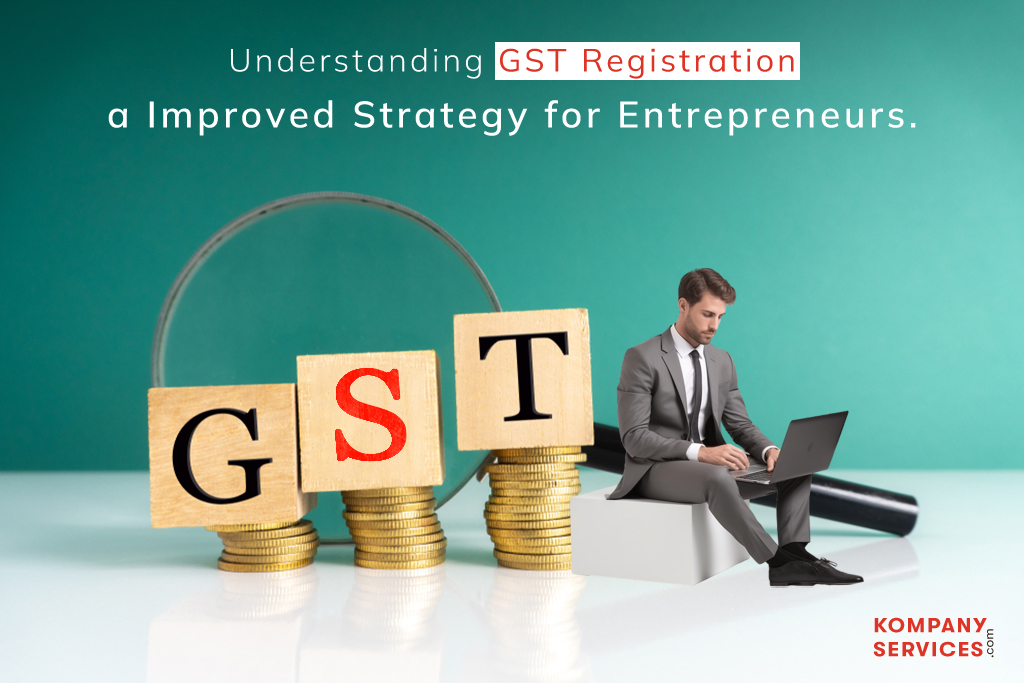Entrepreneurship can be both a thrilling and difficult endeavor, particularly for new businesses. Entrepreneurs must adeptly navigate the registration procedure for the Goods and Services Tax (GST), which is a critical component. Ensuring GST registration is a fundamental prerequisite for enterprises to function lawfully and in adherence to tax regulations. The objective of this article is to furnish businesses with an all-encompassing manual that clarifies the GST registration procedure. Everything you need to know to successfully register your startup for GST, including eligibility requirements and documents, registration benefits, and common obstacles, will be covered. Therefore, let us proceed to an in-depth analysis and furnish you with the essential understanding to guarantee a seamless experience during the process of registering for the GST.
What is registration for GST?
The procedure by which a startup or other business acquires a Goods and Services Tax (GST) identification number is referred to as GST registration. This number is essential for conducting business operations in India and is unique to each organization.
Detailed Instructions for Registering Under the GST
There are a few processes involved in the process of registering for the Goods and Services Tax (GST), which are as follows:
- Determine Eligibility: If the taxpayer’s business turnover is more than the required turnover, then the taxpayer is eligible to register under the Goods and Services Tax (GST). If the annual turnover in the normal state is forty lakhs, but in the special state it is twenty lakhs.
- Visit the GST Portal and log in to your account. This will allow you to access the GST Portal.
- Form of Registration – Once the login has been created, the registration form is filled out. The GST REG 01 form includes both PART A and PART B, both of which are delivered to the user.
- Documentation that is required – In addition to the forms, there are certain documents that must be submitted.
- After the OPT has been verified, the ARN and TRN are generated for future reference by SMS and email. This is done for the purpose of ensuring that the information is accurate.
- Verification of the details The tax officer will verify the details that are supplied in the form as well as the supporting papers that are provided.
- Allotment of the GSTIN – The GSTIN is assigned after the acceptance made in the GST REG 06. If there is a rejection of the registration form, then the information is communicated in
GSTIN
Each and every taxpayer who is registered for the Goods and Services Tax (GST) is given a 15-digit unique identification number known as the GSTIN. For the purpose of submitting GST returns, making payments, and engaging in other activities linked to GST, the GSTIN is utilized.
TRN stands for “temporary reference number.”
When an application for GST registration is submitted, a 15-digit number known as the Transaction Reference Number (TRN) is generated. In order to monitor the current status of the application, the TRN is utilized.
ARN stands for “Acknowledgement Number.”
The Application Number (ARN) is a 15-digit number that is generated when the application for GST registration is authorized. It is the final confirmation of GST registration that the ARN is obtained.
The time limit for registering for the GST
Once a business has begun operations, the time restriction for registering for the Goods and Services Tax (GST) is 30 days.
Why Entrepreneurs Should Register for GST
Chennai, which is a bustling business hub, offers a vast number of prospects for company initiatives that are entrepreneurial in nature. On the other hand, deciphering the complexities of taxation can be a frustrating experience. Entrepreneurs in the city can access a plethora of benefits by registering for the Goods and Services Tax (GST), which is where the game-changing moment occurs.
Increased Credibility and Influence in the Market:
- The Goods and Services Tax (GST) registration proves that your company is in accordance with tax legislation, which in turn increases the credibility of your company in the eyes of purchasers, vendors, and investors.
- Access to a wider Market: It makes interstate trade easier, which enables you to reach a wider consumer base across India without having to pay taxes in different states.
- Enhanced Transparency: The Goods and Services Tax (GST) encourages transparency in company interactions, which helps to cultivate trust and confidence with stakeholder groups.
There are financial benefits:
Taking advantage of the Input Tax Credit (ITC) on taxes that you have already paid on purchases can help you decrease your overall tax burden, which can result in significant cost savings.
Reduced Compliance Burden: The online GST portal simplifies compliance procedures by streamlining tax filing and payments, hence reducing the burden of compliance.
As a result of the elimination of the cascading impact of taxes, which occurs when taxes are placed on taxes, the Goods and Services Tax (GST) further reduces the pressure that you are under financially.
Businesses who have a turnover that is lower than a specific threshold are eligible to receive a simplified tax payment system that has reduced compliance requirements. This scheme is known as the Composition system for Small Businesses.
The Effectiveness of Operations:
Increased Efficiency in Logistics The commodities and Services Tax (GST) streamlines the transportation of commodities across India by reducing tax barriers and increasing the efficiency of logistics.
Better Inventory Management: The transparency of the Goods and Services Tax (GST) makes it possible to improve inventory management, which in turn reduces unnecessary expenses and waste.
Increased Competitiveness: The Goods and Services Tax (GST) creates a level playing field for enterprises, making it possible for you to effectively compete with established firms.
GST Registration Tips for New Businesses
Recognize the conditions for GST registration
Make sure you fully comprehend and investigate the GST registration criteria that are unique to the business category and turnover of your firm. This will assist in obtaining the data and paperwork required for a seamless registration procedure.
Arrange and get ready the required paperwork.
Make a list of all the paperwork needed for GST registration, including bank statements, PAN cards, proof of address, and business registration paperwork. To expedite the registration procedure and prevent any last-minute hiccups, plan them ahead of time.
If necessary, seek expert assistance.
A tax consultant or chartered accountant may be able to provide you with professional advice if you find the GST registration procedure confusing or intimidating. They can help you navigate the procedure, guaranteeing adherence and reducing the possibility of mistakes.
Remember deadlines and crucial dates.
Keep abreast of the deadlines for registering for GST, submitting returns, and paying taxes. There may be fines and legal repercussions for missing deadlines. To make sure that you remember these dates and ensure timely compliance, use digital tools or set reminders.
Final Thoughts
The process of registering for the Goods and Services Tax (GST) is basic and uncomplicated. In order to begin complying with the new tax regime, businesses can easily register for the Goods and Services Tax (GST) online. Entrepreneurs in Chennai can benefit from GST registration as it is a vital instrument that enables growth and success. By adopting and utilizing its advantages, you can tap into a broader market, maximize financial resources, improve operational effectiveness, and obtain a competitive advantage in the ever-changing business environment of the city.




